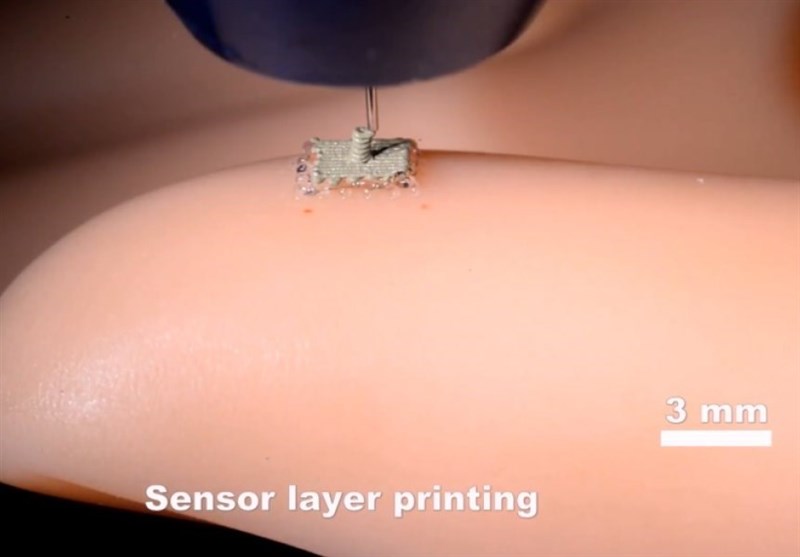3D-Printed 'Bionic Skin' for Robots
TEHRAN (Tasnim) - Engineering researchers developed a revolutionary process for 3D printing stretchable electronic sensory devices that could give robots the ability to feel their environment. The discovery is also a major step forward in printing electronics on real human skin.
The research led by engineers at the University of Minnesota will be published in the next issue of Advanced Materials and is currently online.
"This stretchable electronic fabric we developed has many practical uses," said Michael McAlpine, a University of Minnesota mechanical engineering associate professor and lead researcher on the study.
"Putting this type of 'bionic skin' on surgical robots would give surgeons the ability to actually feel during minimally invasive surgeries, which would make surgery easier instead of just using cameras like they do now. These sensors could also make it easier for other robots to walk and interact with their environment."
McAlpine said the new discovery could also be used to print electronics on real human skin. This ultimate wearable technology could eventually be used for health monitoring or by soldiers in the field to detect dangerous chemicals or explosives.
"While we haven't printed on human skin yet, we were able to print on the curved surface of a model hand using our technique," he added. "We also interfaced a printed device with the skin and were surprised that the device was so sensitive that it could detect your pulse in real time."
McAlpine and his team made the unique sensing fabric with a one-of-a kind 3D printer they built in the lab. The multifunctional printer has four nozzles to print the various specialized "inks" that make up the layers of the device -- a base layer of silicone, top and bottom electrodes made of a conducting ink, a coil-shaped pressure sensor, and a sacrificial layer that holds the top layer in place while it sets. The supporting sacrificial layer is later washed away in the final manufacturing process.
The researchers say the next step is to move toward semiconductor inks and printing on a real body.





